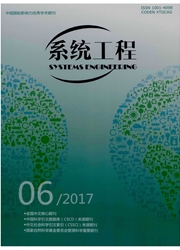

 中文摘要:
中文摘要:
基于全要素生产理论,选取CO2排放量作为能源利用的环境影响替代变量引入研究,利用非参数前沿分析方法——数据包络分析(DEA)和方向性距离函数建立能源环境效率测度模型并将"环境规制"的思想纳入研究体系,以2000~2007中国省际面板数据进行了实证研究。得出的主要结论包括:(1)中国各省份能源环境效率差异明显,经济产出、能源节约和CO2减排还具有较大的改进空间;(2)Kruskal-Walli H和Mann-Whitney U检验结果表明中国三大地区能源环境效率存在显著差异的变化特征,整体上显示出东部-中部-西部的发展格局;(3)无环境规制和环境规制条件下两类模型的测度结果显示中国大多数省份存在明显的环境规制成本,从一个侧面说明了这些省份经济与环境之间尚未实现协调发展。
 英文摘要:
英文摘要:
Considering CO2 emissions as a proxy variable of environmental effects' of energy utilization and putting them into the study framework based on total-factor production theory,this paper sets up the models for measuring China's provincial environmental efficiency of energy utilization and introduces the idea of "Environmental Regulation" into its research system.The results shown by the empirical study of Chinese provincial panel data from 2000 to 2007 are listed as follows:(1) China's provincial environmental efficiency of energy utilization has obviously different from each other,so economic output,energy conservation and CO2 emissions reduction also have comparatively large room for improvement;(2) The test results of Kruskal-Wallis H and Mann-Whitney U test show that the there are remarkable differences among the environmental efficiency of utilization of China's major three areas and show the eastern-western-central development pattern totally;(3) The measurement results under the conditions of "environmental regulation" and "non-environmental regulation" show that most China's provinces have obvious environmental regulation cost,which, in a sense,indicates that these provinces' coordinated development of the economy and enviornment has not been realized.
 同期刊论文项目
同期刊论文项目
 同项目期刊论文
同项目期刊论文
 Prediction of water inrush from coal floor based on small sample data mining technology and realizat
Prediction of water inrush from coal floor based on small sample data mining technology and realizat Multi-attribute group decision-making method based on generalized aggregation operators in trapezoid
Multi-attribute group decision-making method based on generalized aggregation operators in trapezoid Application of entropy-weight fuzzy comprehensive evaluation method in post safety competency apprai
Application of entropy-weight fuzzy comprehensive evaluation method in post safety competency apprai 期刊信息
期刊信息
